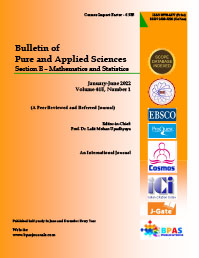Nonoverlapping partitions of a surface
DOI:
https://doi.org/10.48165/Keywords:
planar domains, ribboned regions, isometric circles, minimal number, Schottky problem, Riemann surfacesAbstract
The colouring of planar domains is considered through the tight packing of rectangular regions. It is demonstrated that a maximal number of colours in a neigh bourhood is achieved through the introduction of ribboned regions. This number can be reduced to four in the brick model with a special choice of colours in the surrounding region. An exceptional planar domain found by interweaving a ribboned region with a compact hexagonal configuration of isometric circles of a Schottky group requires an ad ditional colour. The equivalent tight packing of isometric circles of the Schottky group provides a method for deriving the number of colours required to cover a Riemann sur face. The chromatic number is derived for both orientable surfaces of genus g ≥ 3 and nonorientable surfaces of genus g ≥ 4.
References
Apfel, K. and Haken, W. (1977). Every planar map is four-colorable, I: discharging, Illinois J. Math., 21, 429–490.
Apfel, K. and Haken, W. (1977). Every planar map is four-colorable, II: reducibility, Illinois J. Math., 21, 491–567.
Heawood, P.J. (1890). Map colour theorem, Quart. J. Math., 24, 332–338. [4] Ringel, G. and Youngs, J.W.T. (1968). Solution of the Heawood map-colouring problem, Proc. Nat. Acad. Sci. U.S.A., 60, 438–445.
Davis, S. (2014). A resolution of the integration region problem for supermoduli space integrals, Int. J. Mod. Phys., A29, 1450190, 1–60.
